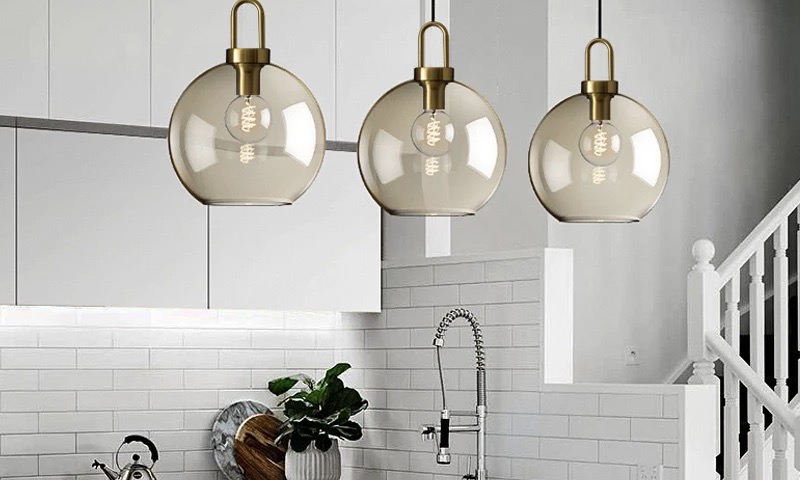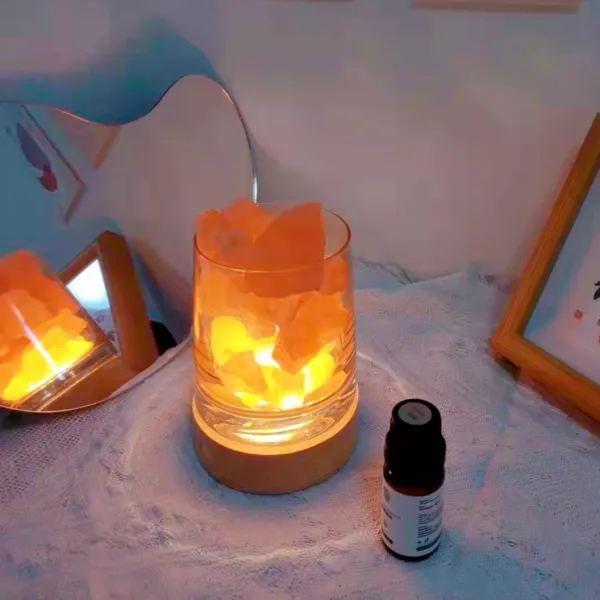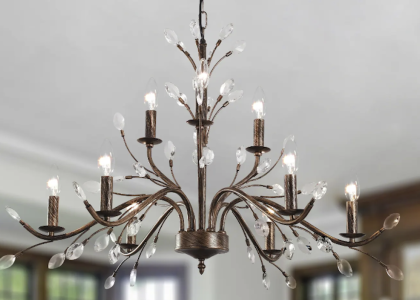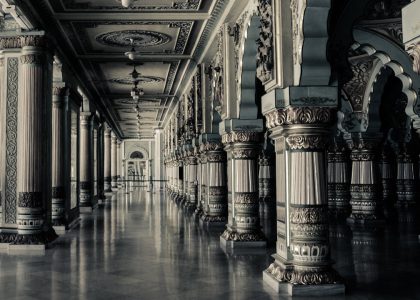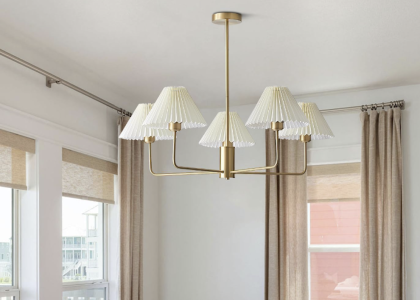Introduction
Lighting plays a crucial role in creating a comfortable and inviting atmosphere in our homes. It not only illuminates our spaces but also has a significant impact on our mood, productivity, and overall well-being. Proper lighting can enhance the décor of a room, improve safety, and even save energy. In this article, we will explore the importance of lighting in a home and provide tips and ideas for choosing the right type of lighting for each room, maximizing natural light, selecting the right light bulbs, enhancing décor with creative lighting, and troubleshooting common lighting problems.
Understanding the Importance of Lighting in Your Home
a) The impact of lighting on mood and productivity: Lighting has a profound effect on our mood and productivity. Bright, natural light can boost our energy levels and improve our mood, while dimmer, warmer lighting can create a cozy and relaxing ambiance. Studies have shown that well-lit spaces can increase productivity and focus, making it easier to complete tasks efficiently. On the other hand, poor lighting can lead to eye strain, fatigue, and even headaches.
b) The role of lighting in enhancing décor: Lighting is an essential element in interior design as it can enhance the overall aesthetic of a room. Different types of lighting fixtures can be used to highlight architectural features, artwork, or specific areas in a space. By strategically placing lights and using different intensities and colors, you can create a visually appealing and well-balanced environment.
c) The importance of proper lighting for safety: Proper lighting Casalucelighting is crucial for maintaining a safe living environment. Well-lit hallways, staircases, and outdoor areas can prevent accidents and falls. Adequate task lighting in areas such as the kitchen or workspace is essential for performing tasks safely and efficiently. Additionally, having good lighting in entryways and around windows can deter potential intruders.
Choosing the Right Type of Lighting for Each Room
a) Factors to consider when choosing lighting for a room: When selecting lighting for a room, several factors need to be considered. The size and layout of the room, the function of the space, and the existing décor should all be taken into account. Additionally, the amount of natural light available in the room should also be considered, as it will affect the type and intensity of artificial lighting needed.
b) Different types of lighting fixtures and their purposes: There are various types of lighting fixtures available, each serving a specific purpose. Ambient lighting provides overall illumination to a room and can be achieved through ceiling-mounted fixtures, chandeliers, or recessed lights. Task lighting is focused lighting that is used for specific activities such as reading or cooking. It can be achieved through desk lamps, under-cabinet lights, or pendant lights. Accent lighting is used to highlight specific features or objects in a room and can be achieved through track lighting, wall sconces, or picture lights.
c) Tips for selecting the right lighting for each room: When selecting lighting for each room, it is important to consider the function of the space. For example, in the kitchen, bright task lighting is essential for food preparation and cooking. In the living room, a combination of ambient and accent lighting can create a warm and inviting atmosphere. In the bedroom, softer and dimmable lighting can promote relaxation and better sleep. It is also important to consider the color temperature of the light bulbs used, as warmer tones are more suitable for relaxing spaces while cooler tones are better for task-oriented areas.
Layering Your Lighting for Optimal Illumination
a) The concept of layering lighting: Layering lighting involves using multiple sources of light in a room to create depth and dimension. By combining ambient, task, and accent lighting, you can achieve optimal illumination and create different moods within a space. Layering lighting also allows for flexibility in adjusting the lighting levels based on the time of day or specific activities.
b) How to layer lighting in a room: To effectively layer lighting in a room, start with ambient lighting as the base layer. This can be achieved through overhead fixtures or recessed lights. Next, add task lighting in areas where specific activities take place, such as reading nooks or workspaces. Finally, incorporate accent lighting to highlight architectural features, artwork, or decorative objects. This can be achieved through wall sconces, track lighting, or picture lights.
c) Benefits of layered lighting: Layered lighting offers several benefits. It provides a more balanced and even distribution of light throughout a room, reducing shadows and glare. It also allows for flexibility in creating different moods and atmospheres within a space. Additionally, by using multiple sources of light, you can reduce the reliance on a single overhead fixture, which can be harsh and unflattering.
Incorporating Natural Light into Your Space
a) The benefits of natural light: Natural light has numerous benefits for both our physical and mental well-being. Exposure to natural light has been shown to improve mood, increase vitamin D production, and regulate our circadian rhythm. Natural light also enhances the visual appeal of a space, making it feel more open and inviting.
b) Tips for maximizing natural light in your home: To maximize natural light in your home, start by keeping windows clean and free from obstructions such as heavy curtains or furniture. Use light-colored or sheer window treatments that allow for maximum light penetration. Additionally, consider using reflective surfaces such as mirrors or light-colored walls to bounce natural light around the room.
c) How to balance natural light with artificial lighting: While natural light is desirable, it is not always available or sufficient for all areas of a home. In rooms with limited natural light or during nighttime hours, artificial lighting is necessary. To balance natural light with artificial lighting, consider using dimmers or adjustable light fixtures that can mimic the intensity and color temperature of natural light. This will create a seamless transition between natural and artificial lighting throughout the day.
The Pros and Cons of Different Light Bulbs
a) Overview of different types of light bulbs: There are several types of light bulbs available, each with its own set of pros and cons. Incandescent bulbs are the traditional choice but are inefficient and have a short lifespan. Halogen bulbs are more energy-efficient but can get hot and have a shorter lifespan. Compact fluorescent lamps (CFLs) are energy-efficient but contain mercury and take time to reach full brightness. Light-emitting diodes (LEDs) are the most energy-efficient option and have a long lifespan but can be more expensive upfront.
b) Pros and cons of each type: Incandescent bulbs are inexpensive and provide warm, natural light, but they consume a lot of energy and have a short lifespan. Halogen bulbs are more energy-efficient than incandescent bulbs but still consume more energy than CFLs or LEDs. CFLs are energy-efficient and have a longer lifespan than incandescent bulbs, but they contain mercury and take time to warm up. LEDs are the most energy-efficient option, have a long lifespan, and are available in various color temperatures, but they can be more expensive upfront.
c) How to choose the right light bulb for your needs: When choosing a light bulb, consider factors such as energy efficiency, lifespan, color temperature, and upfront cost. LED bulbs are generally the best choice for most applications due to their energy efficiency, long lifespan, and versatility in color temperature options. However, if you prefer warmer tones or have specific lighting requirements, CFLs or halogen bulbs may be suitable alternatives.
Creative Lighting Ideas to Enhance Your Décor
a) Unique lighting fixtures and designs: Lighting fixtures come in a wide range of styles and designs, allowing you to add a unique touch to your décor. From modern and minimalist designs to vintage-inspired or industrial fixtures, there is something to suit every taste and style. Consider pendant lights, chandeliers, or wall sconces with unique shapes or materials to make a statement in your space.
b) How to use lighting to highlight décor: Lighting can be used strategically to highlight specific décor elements in a room. For example, track lighting or recessed lights can be used to illuminate artwork or architectural features such as exposed brick walls or wooden beams. Wall sconces or picture lights can be used to showcase framed artwork or photographs. By directing light towards these focal points, you can draw attention to them and create visual interest.
c) DIY lighting projects: If you’re feeling creative, there are numerous DIY lighting projects that you can undertake to enhance your décor. From repurposing old objects into unique light fixtures to creating your own pendant lights or lampshades, the possibilities are endless. DIY lighting projects not only allow you to personalize your space but also provide a sense of accomplishment and satisfaction.
Maximizing Lighting Efficiency and Energy Savings
a) Tips for reducing energy consumption: There are several ways to reduce energy consumption and make your lighting more efficient. Start by replacing incandescent bulbs with energy-efficient options such as CFLs or LEDs. Use dimmers or timers to control the intensity and duration of lighting in different areas of your home. Additionally, consider installing motion sensors in areas such as hallways or bathrooms to ensure that lights are only on when needed.
b) Energy-efficient lighting options: Energy-efficient lighting options such as CFLs and LEDs are the best choices for reducing energy consumption. CFLs use about 75% less energy than incandescent bulbs and last up to 10 times longer. LEDs are even more energy-efficient, using up to 80% less energy than incandescent bulbs and lasting up to 25 times longer. While energy-efficient bulbs may have a higher upfront cost, the long-term savings in energy consumption and replacement costs make them a worthwhile investment.
c) How to save money on your lighting bill: In addition to using energy-efficient bulbs, there are other ways to save money on your lighting bill. Make it a habit to turn off lights when not in use, especially in unoccupied rooms. Use natural light whenever possible and rely on task lighting instead of illuminating an entire room. Regularly clean light fixtures and replace any faulty or inefficient bulbs. By being mindful of your lighting usage and making small changes, you can significantly reduce your lighting bill.
Lighting for Different Activities: Reading, Cooking, and Relaxing
a) The importance of task lighting: Task lighting is essential for specific activities that require focused illumination. Reading, cooking, and working at a desk are examples of activities that require adequate task lighting. Proper task lighting reduces eye strain and allows for better visibility and concentration.
b) How to choose the right lighting for different activities: When choosing lighting for different activities, consider the specific requirements of each task. For reading, a bright and focused light source such as a floor lamp or adjustable desk lamp is ideal. In the kitchen, under-cabinet lights or pendant lights provide direct illumination for food preparation and cooking. For relaxation, dimmable or soft lighting options such as table lamps or wall sconces can create a soothing ambiance.
c) Tips for creating a relaxing ambiance with lighting: To create a relaxing ambiance with lighting, consider using warm-toned bulbs or dimmable fixtures that allow you to adjust the intensity of the light. Soft, diffused lighting can create a cozy and inviting atmosphere. Additionally, incorporating candles or string lights can add a touch of warmth and create a calming effect.
Highlighting Artwork and Other Décor with Strategic Lighting
a) How to use lighting to showcase artwork and décor: Lighting can be used strategically to highlight artwork and other décor elements in a room. For artwork, consider using picture lights or track lighting to direct focused light onto the piece. Adjustable spotlights or track lighting can also be used to highlight architectural features or decorative objects such as sculptures or plants.
b) Tips for highlighting specific features in a room: When highlighting specific features in a room, consider the placement and direction of the light source. Experiment with different angles and intensities to achieve the desired effect. Additionally, consider using different color temperatures or filters to create a unique ambiance.
c) The impact of lighting on the overall aesthetic of a space: Lighting has a significant impact on the overall aesthetic of a space. It can enhance the colors and textures of materials, create depth and dimension, and draw attention to specific elements. By carefully selecting and placing lighting fixtures, you can transform the look and feel of a room.
Troubleshooting Common Lighting Problems and Solutions
a) Common lighting issues and how to fix them: Common lighting issues include flickering lights, buzzing sounds, or lights that don’t turn on or off properly. Flickering lights may be caused by loose bulbs or faulty wiring, while buzzing sounds can indicate a problem with the fixture or electrical connections. Lights that don’t turn on or off properly may be due to faulty switches or wiring. In most cases, these issues can be resolved by checking and tightening connections, replacing faulty bulbs or switches, or calling a professional electrician if necessary.
b) Tips for maintaining your lighting fixtures: Regular maintenance is essential for keeping your lighting fixtures in good condition. Clean light fixtures regularly to remove dust and debris that can affect their performance. Replace any burnt-out bulbs promptly to ensure proper illumination. Inspect wiring and connections periodically for signs of wear or damage. By taking care of your lighting fixtures, you can extend their lifespan and prevent potential issues.
c) When to call a professional: While many lighting issues can be resolved with basic troubleshooting, there are instances where it is best to call a professional electrician. If you are unsure about the cause of a problem or if it involves electrical wiring or connections, it is safer to seek professional help. Electricians have the knowledge and expertise to diagnose and fix complex electrical issues and ensure the safety of your home.
Conclusion
In conclusion, lighting is a crucial element in creating a comfortable, safe, and visually appealing home. It has a significant impact on our mood, productivity, and overall well-being. By understanding the importance of lighting and considering factors such as function, style, and energy efficiency, you can choose the right type of lighting for each room. Layering lighting, maximizing natural light, selecting the right light bulbs, and incorporating creative lighting ideas can further enhance your décor and optimize your home’s lighting. By troubleshooting common lighting problems and maintaining your fixtures, you can ensure that your lighting system operates efficiently and safely. With proper attention to lighting, you can transform your home into a well-lit and inviting space that meets all your needs.


